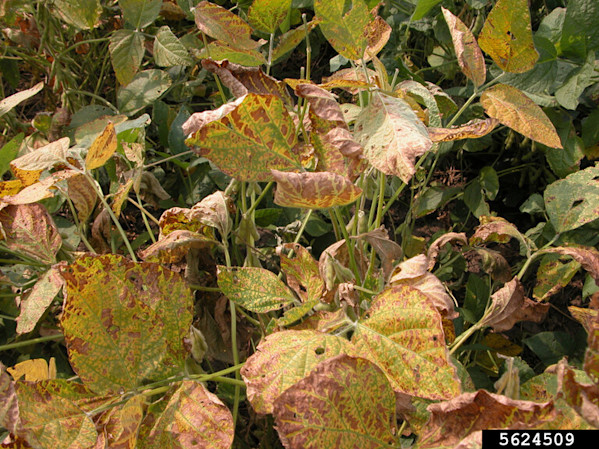How to Identify Brown Stem Rot
Brown Stem Rot (BSR) primarily affects soybeans and can lead to significant yield losses if not managed properly. Here are detailed steps to identify Brown Stem Rot:
1. Field Symptoms
Stunted Growth: Infected plants may exhibit stunted growth compared to healthy plants.
Premature Yellowing: Look for premature yellowing and browning of leaves, especially in the upper canopy.
Leaf Necrosis: Leaves may show necrotic (dead) areas, often between the veins, leading to a "scorched" appearance.
2. Stem Symptoms
Internal Browning: Split the stem of an affected plant lengthwise. The most characteristic symptom of BSR is the brown discoloration of the pith (the central part of the stem). This browning is usually continuous throughout the stem.
Healthy Outer Stem: The outer stem tissue may appear healthy, making it easy to overlook the disease if only external symptoms are considered.
3. Root Symptoms
Root Rot: In some cases, the disease may also cause root rot, which can be identified by dark, decayed roots.
4. Timing of Symptoms
Mid to Late Season: Symptoms typically appear from mid-season to late-season, often after the plants have reached the reproductive stages (R3 to R6).
5. Field Pattern
Patchy Distribution: BSR often appears in patches within a field rather than uniformly. These patches can expand over time.
6. Environmental Conditions
Cool, Wet Conditions: The disease is more prevalent in cool, wet conditions, which favor the growth of the fungus.
7. Laboratory Confirmation
Microscopic Examination: For definitive diagnosis, samples can be sent to a plant pathology lab where the fungus can be isolated and identified under a microscope.
Management Tips
Resistant Varieties: Planting resistant soybean varieties is the most effective way to manage BSR.
Crop Rotation: Rotate soybeans with non-host crops like corn to reduce the pathogen load in the soil.
Field Sanitation: Remove and destroy infected plant debris to reduce the source of inoculum.
Soil Health: Maintain good soil health and drainage to reduce the risk of infection.
If you suspect Brown Stem Rot in your field, it's crucial to take action promptly to manage the disease and prevent further spread.


